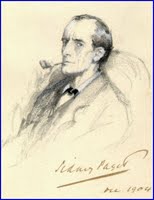Paget Auto Repair: Difference between revisions
| Line 27: | Line 27: | ||
===Barricade Policy=== | ===Barricade Policy=== | ||
You are standing outside Paget Auto Repair, a small yellow-stone building with an arched entrance. The building has been extremely heavily barricaded - you can see no way to enter. | You are standing outside Paget Auto Repair, a small yellow-stone building with an arched entrance. The building has been extremely heavily barricaded - you can see no way to enter.--Horycat 24th of Oct. 2010 | ||
===Current Status=== | ===Current Status=== | ||
Revision as of 08:26, 24 October 2010
| Paget Auto Repair |
| Paget Auto Repair
Foulkes Village [5, 83]
Basic Info:
|
Paget Auto Repair
Description
A small yellow-stone building with an arched entrance.
History
Paget Auto Repair was the brainchild of S. Paget, Esq., who posited in his monograph Modes and Means of Transportation for the Modern Gentleman: A Brief Disquisition on the Most Convenient Methods of Exercising One's Right of Passage across Town and Countryside that the automobile would eventually replace the horse and bicycle as the means of transport of choice.
While mocked at the time, Paget's construction of one of the first auto repair shops - then known as Paget's Bespoke Automated Carriage Maintenance and Refurbishment Facility - proved a prescient act. Having proved his critics wrong, Paget promptly emigrated to Australia and discovered a new species of wallaroo before his death in 1905, caused by an infected wombat bite.
Paget himself never learnt to drive.
Barricade Policy
You are standing outside Paget Auto Repair, a small yellow-stone building with an arched entrance. The building has been extremely heavily barricaded - you can see no way to enter.--Horycat 24th of Oct. 2010
Current Status
| This page, Paget Auto Repair, is a locations stub. Please help us to improve the wiki by contributing to this page. Be sure the following information is added to the page: coordinates, suburb, 9 block map (or 16 block map for large buildings), description, barricading policy, and history. Please refer to the Location Style Guide. |
